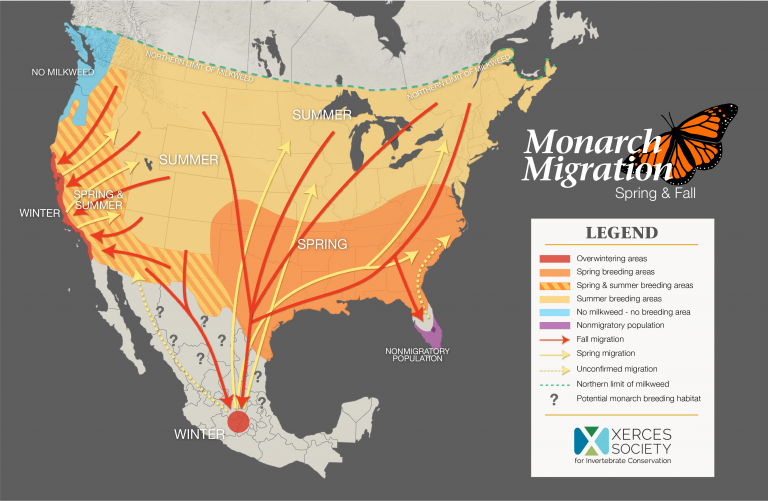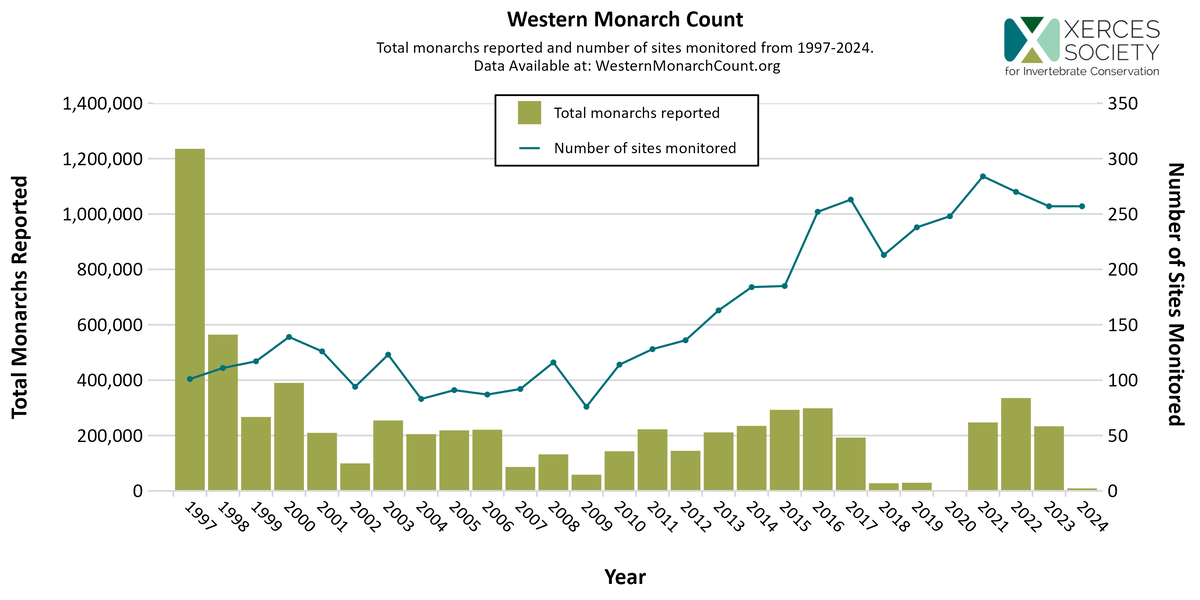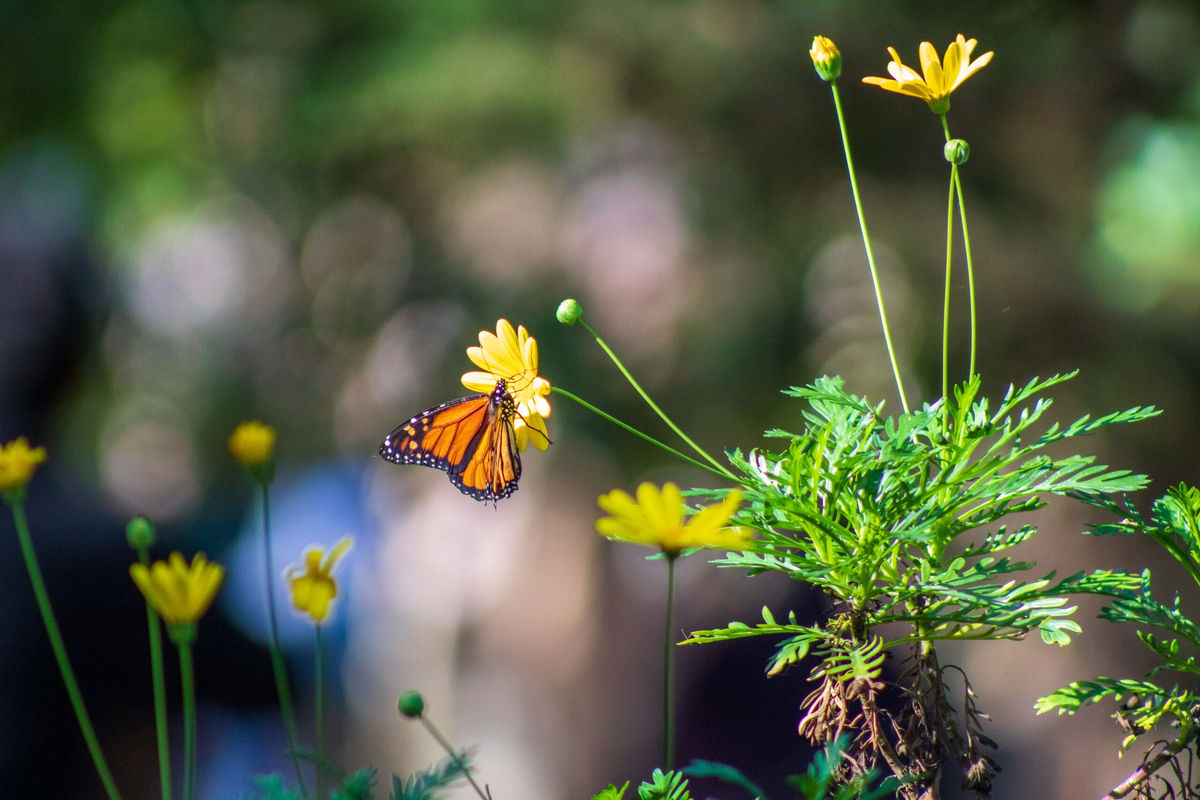Western Monarch Butterfly count shows second lowest visiting population since recording began
PISMO BEACH, Calif. – On Thursday, invertebrate conservation group the Xerxes Society released the results of their 28th annual Western Monarch Butterfly Count and recorded the second lowest overwintering population ever recorded since the group began tracking monarchs in 1997.
Hundreds of volunteers and partners counted the visiting butterflies and found a peak population of only 9,119 butterflies this winter in California.

According to the Xerxes Society, this winter's numbers are a notable decline from the more than 200,000 overwintering Western Monarch butterflies over the past three years and a sharp decline from the millions of butterflies recorded in the 1980s.
Scientists considered those counts in the millions as a stable population level for the traveling insects shared the Xerxes Society.

"The population’s size is extremely concerning," said Emma Pelton, an endangered species biologist with the Xerces Society for Invertebrate Conservation. "We know small populations are especially vulnerable to environmental fluctuations, and we think that’s what happened this year. The record high late summer temperatures and drought in the West likely contributed to the significant drop-off we saw in the third and fourth breeding generations."
Each year, usually around October, Western Monarch butterflies begin to arrive in the Central Coast region to ride out the winter clustered in dense groves of trees as shown in the image below at the Natural Bridges State Park courtesy of the California State Parks Foundation.

"A lot of people care about monarchs. Voluntary efforts like pollinator gardens and restoring habitat are probably a reason they aren’t in worse shape," shared Isis Howard, coordinator of the Western Monarch Count with the Xerces Society. "However, these actions are not enough. To help monarchs recover, we need to work at a larger scale and address widespread issues like pesticide contamination and climate change that are beyond what voluntary efforts have been able to achieve."
In December of 2024, the U.S. Fish and Wildlife Service proposed the inclusion of the Monarch Butterfly as a threatened species under section 4(d) of the Endangered Species Act.
A public comment period on the proposed inclusion will close on March 12 of this year and federal protections could make a difference for the iconic insect.
"The western monarch butterfly is one of the most recognizable species in California, and we are greatly distressed by the results of this year's Western Monarch Count," explained Randy Widera, Director of Programs for California State Parks Foundation. "California State Parks Foundation has worked hard to protect and conserve monarch groves in state parks. We will continue this work, but we also must see monarchs listed as a Threatened species under the Endangered Species Act."
Information on how you can submit a comment on the proposed listing can be found here using the docket number FWS-R3-ES-2024-0137.
The largest overwintering clusters observed this year were in Santa Cruz County and three of the top four sites were located within California State Parks-managed locations.
In 2019 and 2020, Lighthouse Field State Beach, Natural Bridges State Beach, and Point Lobos State Natural Reserve hosted about half of all overwintering monarchs and last year, about 22 percent of all visiting Western Monarch butterflies counted were in State Parks protected areas shared the California State Parks Foundation.
The fourth largest count of monarchs -556 individual butterflies- was at the Pismo Beach Monarch Butterfly Grove and The Nature Conservancy-owned Jack and Laura Dangermond Preserve in Santa Barbara County counted 198 visiting butterflies detailed the Xerxes Society.
Perhaps the most dramatic drop in Western Monarch butterflies has been at the Goleta Monarch Butterfly Grove at Ellwood Mesa.
Ellwood Mesa's butterfly count, shown in the chart below from the City of Goleta whose adopted symbol is a stylized Western Monarch Butterfly, prompted Goleta's Parks and Open Spaces Manager George Thomson to describe this winter's count as "abysmal".
According to the latest federal Species Status Assessment, the Western Monarch butterfly has a greater than 95 percent chance of extinction by 2080.

